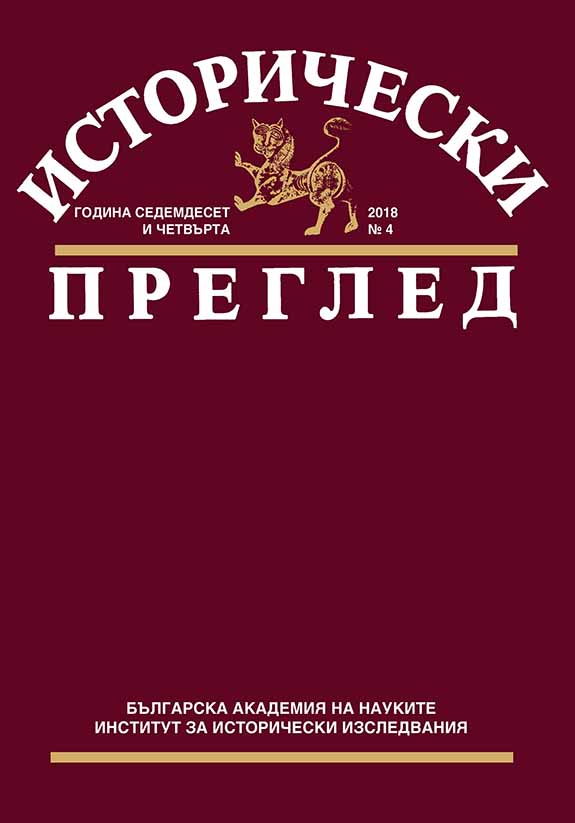
We kindly inform you that, as long as the subject affiliation of our 300.000+ articles is in progress, you might get unsufficient or no results on your third level or second level search. In this case, please broaden your search criteria.

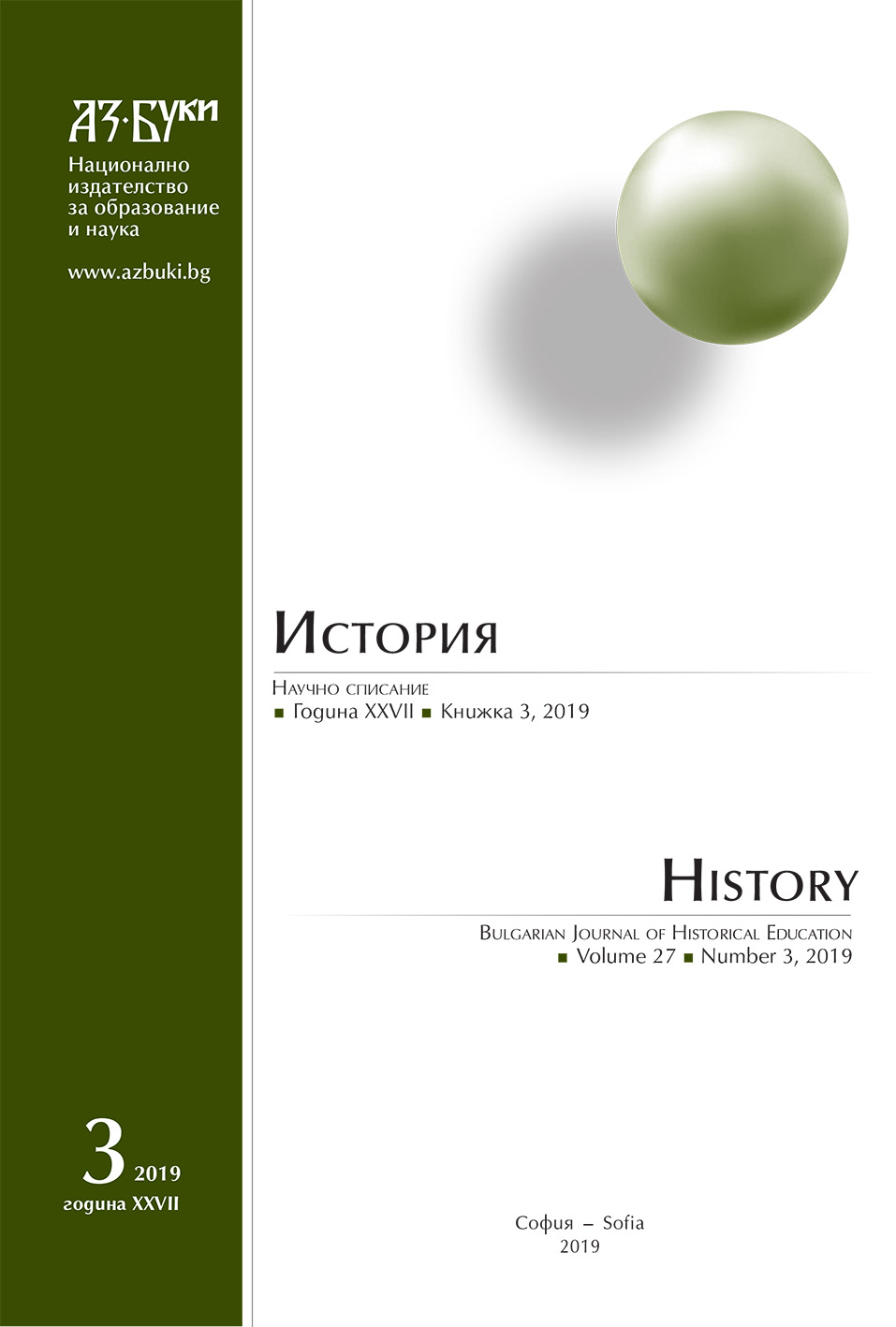
Considering some mistakes made by student during a TV competition on national media, symptomatic of „the state of things“, and based on the theory of affection, the article raises the question of the theoretical and empirical deficits in the historical education and cultural formation of students. It subjects through historical examples the role of the relational context in which the knowledge is absorbed and embodied to challenge the other context of knowledge - the affective. And with that, it turns the scientific focus on the role of hidden curricula for civic education in history,which today define our tomorrow.
More...
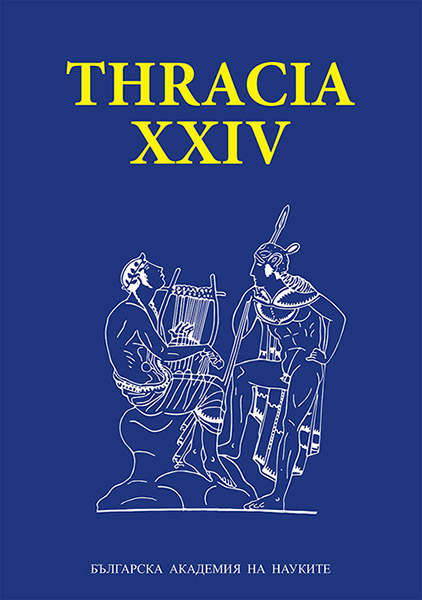
The paper aims to present the personality of Vera Bojadjhieva-Fol – the mother of Prof. Alexander Fol. Her biography is studied in the context of 20th century Bulgarian culture and in interaction with her closest circle of relatives, friends and colleagues. A special emphasis is placed on her intellectual activity of long-time teacher, gifted writer, journalist and translator, on her activity in the field of women’s movement and on her professional networks. Her place among Bulgarian female educated elites is highlighted.
More...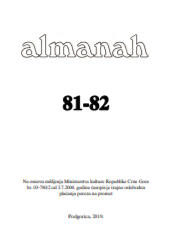
Reviews of: - “Turski (Osmanski) izvori za istoriju Crne Gore”, Podgorica, CANU 2019, tom I-1, I-2, I-3, 1926 pages, review by: Ema Miljković - Zlatko Karač, Alen Žunić: “Islamska arhitektura i umjetnost u Hrvatskoj - Osmanska i suvremena baština” (Islamic Architecture and Art in Croatia - Ottoman and Contemporary Heritage), Arhitektonski fakultet Sveučilišta u Zagrebu, UPI-2M PLUS, Zagreb, 2018, 432 pages, review by: Rifat Alihodžić - Zuvdija Hodžić: „Kapija Prokletija – Gusinje i Plav u zapisima i putopisima“, Almanah, Podgorica 2019, 298 pages, review by: Draško Došljak - “Putovanje kroz boje Ibrahima Kurpejovića” (Sa otvaranja izložbe I. Kurpejovića u Historijskom muzeju u Sarajevu 24. aprila 2019. Godine), review by: Faruk Dizdarević - Husein Bašić: “Nedovršene tuge”, review by: Jasmina Srdanović - Izet Šabotić: “Čivčijski odnosi i promjena vlasništva nad zemljom u Bosni i Hercegovini (1878-1918)”, Centar za istraživanje moderne i savremene historije Tuzla, Tuzla 2019, 320 pages., review by Jasmina Jajčević
More...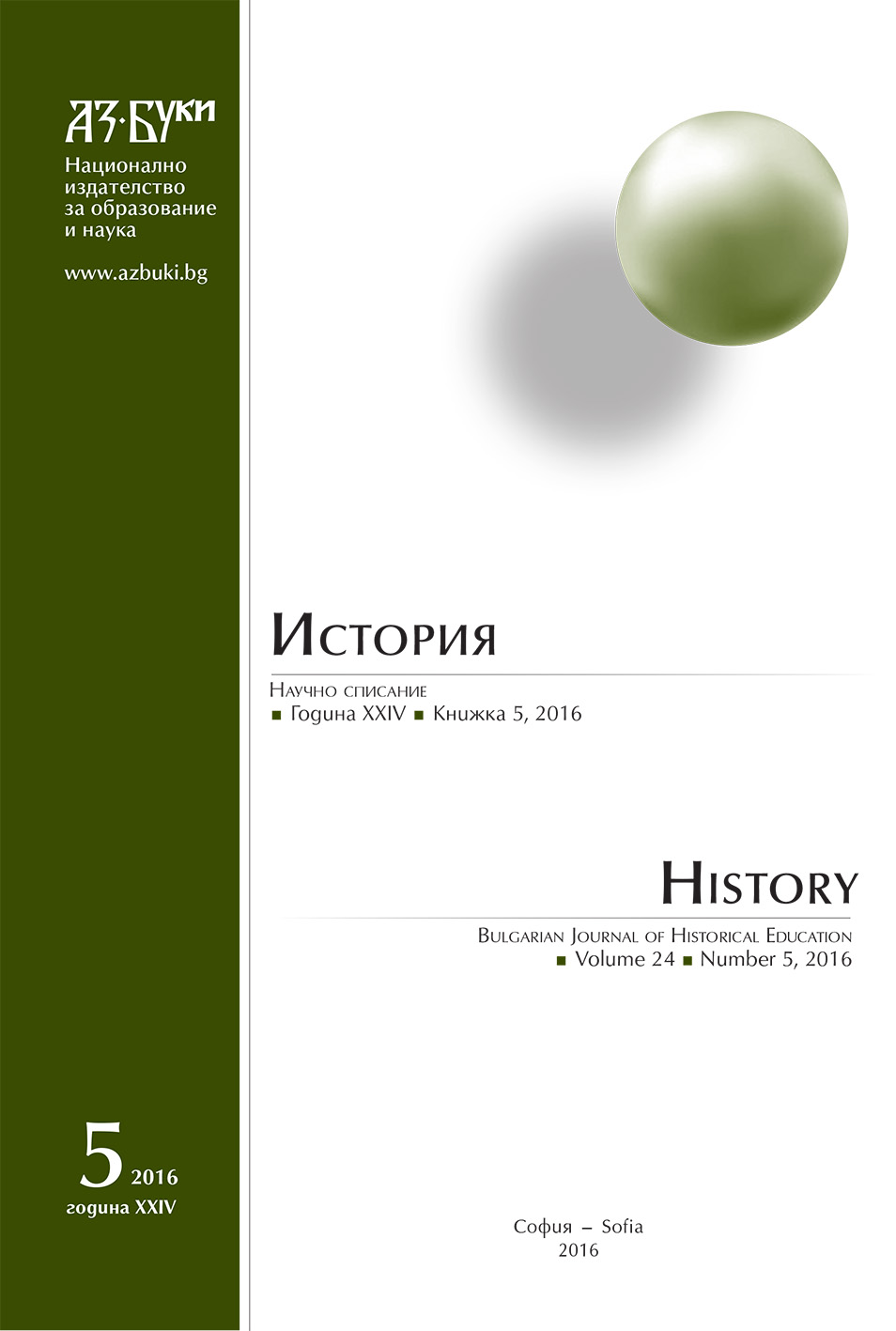
Russian revolutions of 1917 still attract the attention of the historians. Was Russia able to avoid those cataclysms? Why was the Proletarian revolution accomplished in an undeveloped rural country? These and many other questions have answers sought in the perspicacious books of the Russian religious philosopher Nikolai Berdyaev. He is the man who saw the truth that the revolution was the internal destiny of the Russian people and that Bolshevism could only be defeated with intellectual overcoming and not with guns.
More...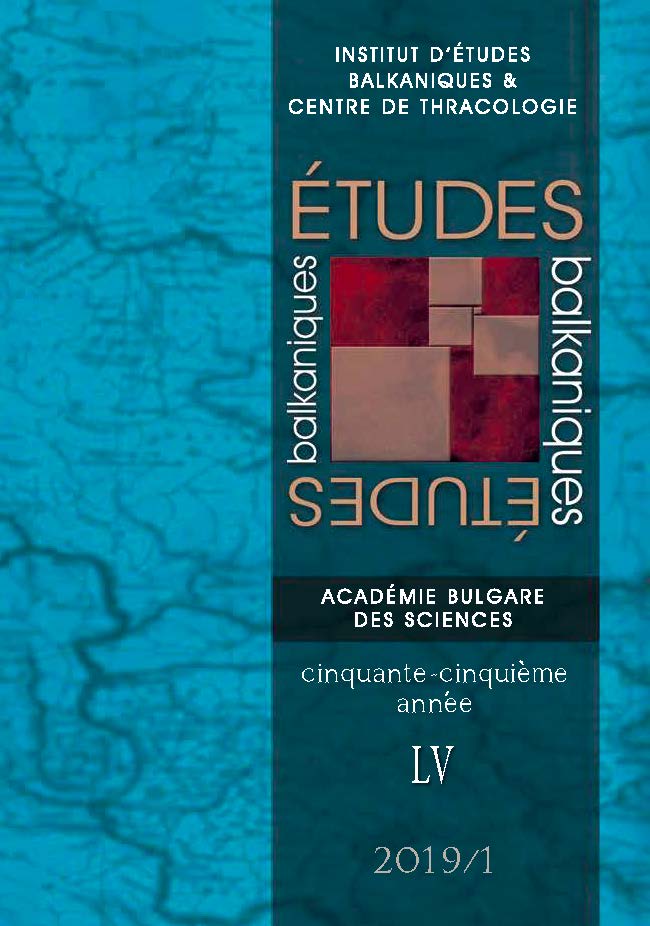
The object of the present study is an unpublished account from 1632 preserved in the Propaganda Fide Archive in Rome. The source provides a detailed description of three miracles which occurred in Bulgaria, namely in Sofia, Trăn and Nikopol. The document is important because it offers new information which allows us to better understand the complex relations between Christians and Muslims in the Balkan Peninsula. The author of the study considers the Ragusan merchants from Sofia to be the spies who brought this fresh and updated information to the Imperial Court in Vienna. He argues that the unknown author of the account was most likely Ciriaco Rocci, the Apostolic nuncio to the emperor.
More...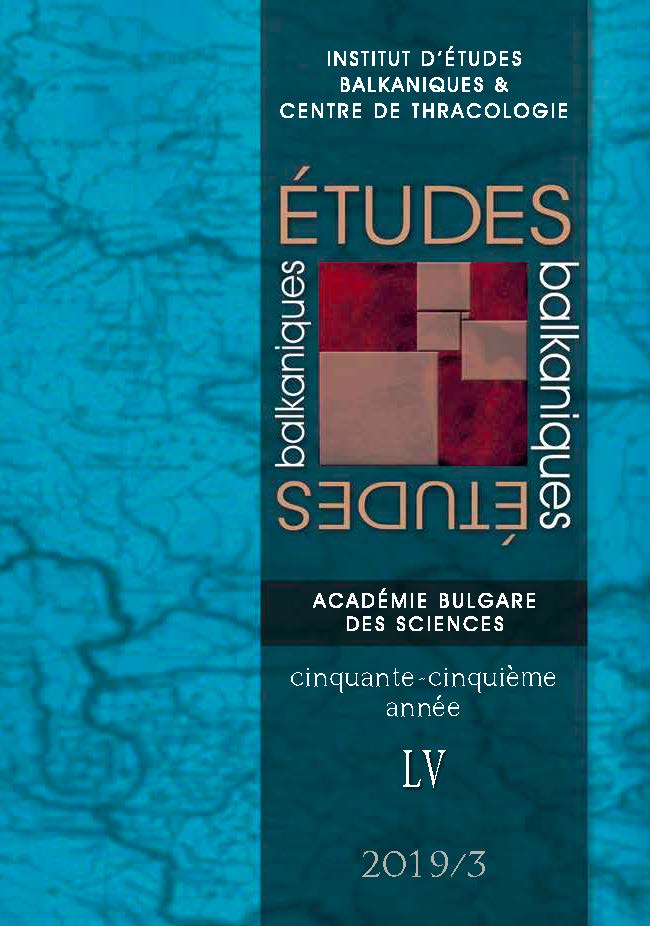
We are examining the administration of the Greek-Orthodox community in Thessaloniki during the Ottoman period, and its evolution in the 19th century. We are observing self-governance institutions in place since the Byzantine era. Powerful Greek-Orthodox families of Salonica and the Church play an important role in the administration of the Greek-Orthodox community. By the 17th century, changes can be seen in the makeup of the community’s administration as new members from the city’s professional guilds become part of it. This development enhanced the role of secular elements in that administration. By the second half of the 18th century, the creation of a class of merchants in the Greek-Orthodox community helped it gain a leading role in the administration of its affairs. We are also examining, by relying on Ottoman documentary evidence, the districts inhabited by the Greek-Orthodox of Thessaloniki in the first half of the 19th century, and how these developed in the latter part of the century following the city’s new town plan. The changes brought about by the Ottoman authorities in the second half of the 19th century with respect to the administration of the Greek-Orthodox communities under Ottoman rule were significant. Nonetheless, socially and financially powerful groups continued to partake of the administration of the Salonica community. The participation of the Greek Orthodox (powerful financially and socially groups) in regional councils (the so-called vilayet idare meclisi) brought about changes in the relations of the Greek-Orthodox with the local representatives of the Ottoman authorities. By the end of the 19th century, these developments had led to the emergence of new socialities between communities, and new mentalities and behaviors.
More...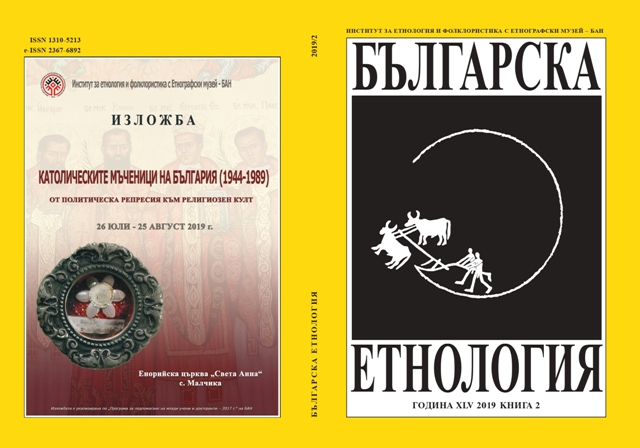
In the religious practices of the population in the Bulgarian lands, kurban is an instrument for expressing gratitude towards God for His support during times of hardship, illnesses, and ordeals. It is constantly present in ceremonial practices from time immemorial. However, as every other aspect of human life, it is subject to change. The alterations in religious beliefs lead to variations in the ritual itself and the nature of the sacrifice. Nevertheless, more detailed analysis shows that modern kurban represents a peculiar mixture of ancient traditions and newer religious customs. Furthermore, Christian and Islamic theologies are not always dominant in ceremonial practices. The influence of pagan cults is felt particularly strongly in the mountainous and semi-mountainous regions, where the role of the religious institutions is markedly weaker.
More...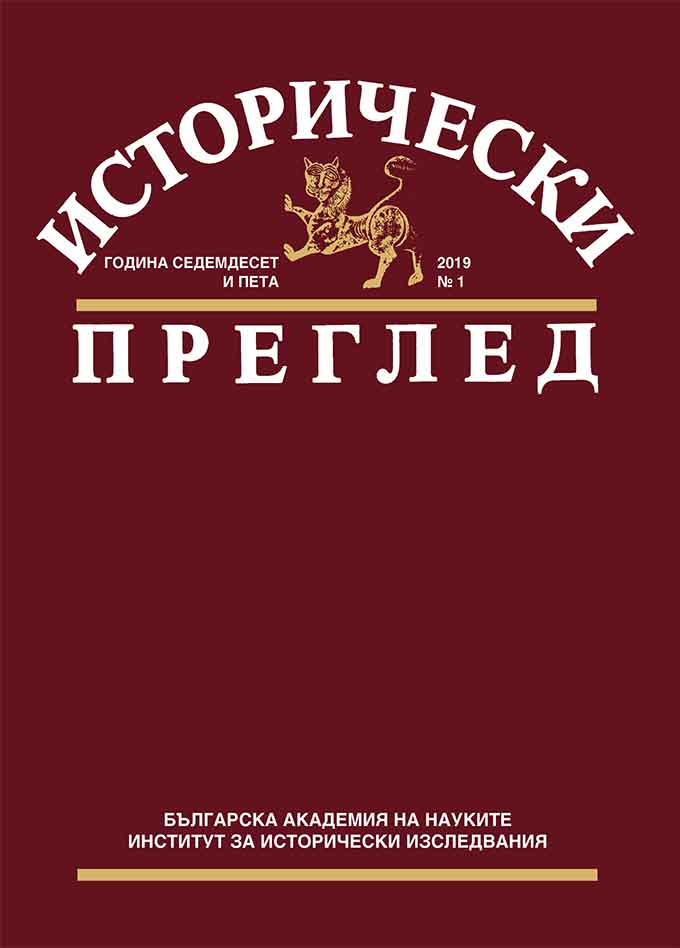
The article argues that speculation with the metaphorical use of the term “slavery”, which in recent years took over the Bulgarian public debate on the Ottoman past, is due not only to political and ideological reasons but also to the fact that the Bulgarian historical science does not pay enough attention to the study of the institution of slavery in the Ottoman empire. Very little, in particular, has been done for the research on domestic slavery, which was the most mass form of slavery in the Empire, including its Bulgarian provinces. Several themes are discussed in the text, the illumination of which undermines the popular myth of the total Bulgarian “slavery” during the Ottoman era: 1/ about the ethnic composition of slaves, its dynamics over the centuries and the exceptionally modest place of the Bulgarians among the slaves after the middle of the 15th century; 2/ about the significant difference between the status of slaves in the Ottoman Empire – on the one hand, and its non-Muslim subjects – on the other hand and 3/ about the presence not only of the non-Muslim but also of the Muslim slavery in the Bulgarian lands during the Ottoman centuries, as well as about slavery as an integral part of the history not only of the Ottoman Empire, but also of all southern Christian Europe until the beginning of the 19th century.
More...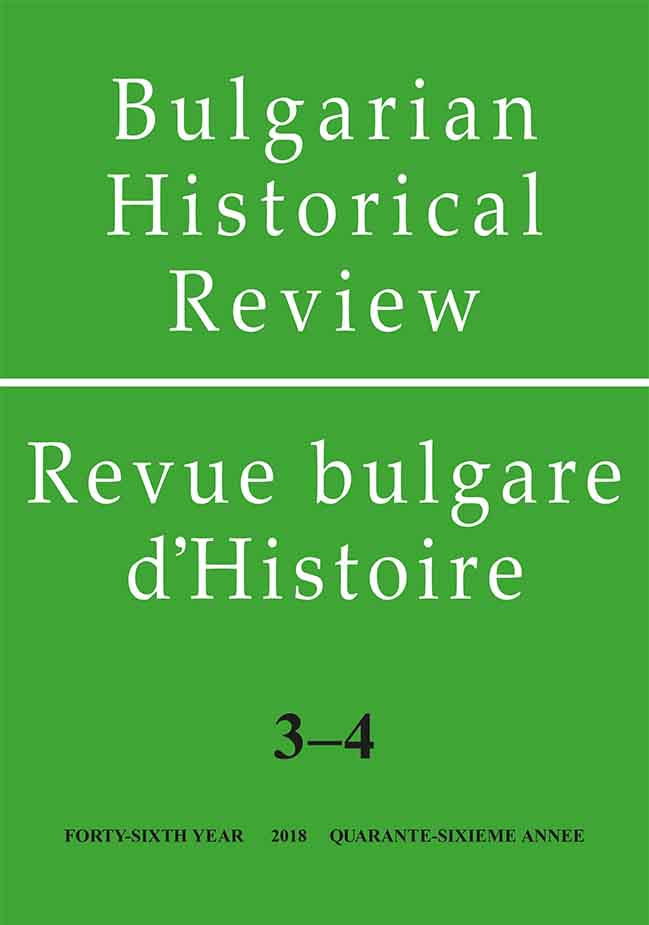
From the marriage of Zeus with Mnemosyne, the nine classical muses came from. Among them, Urania (the muse of astronomy) and Cleo (the patron of history) were in a peculiar relationship at a time when the inspiration played a fundamental role for the intellectual work which was considered an art. The very name of Cleo (the “Glorious”) points to one of the concepts for the mission of history to tell about bygone events and to celebrate someone’s deeds. This makes it a subjective occupation, the results of which depend on the skills of the narrator and his attitude toward the target object, which is why issues, events and personalities receive conflicting assessments. The acts of Cleo and Urania in antiquity were often mixed up, and this creates confusion in clarifying the relationships of individual characters. But the interaction between the two sisters gave birth to the fruit of a knowledge combining the scent of the universal infinity with poetry united in the essence of history. The very name (from the Greek ἱστορία – study, knowledge acquired through research) shows that the main task of a historian in his work is to study and verify the information, and only then comes the narrative, dressed in an appropriate form. Sources are of a various nature, so the individual disciplines involved with their analysis are also numerous. Thus, from the embrace of Urania with Cleo, the fundamental disciplines of history were born without which it could not claim to be a science. 1681 is considered to be the birth date of the auxiliary sciences of history. In this year Jean Mabillion’s profound work set the beginning of scientific diplomatics and palaeography. Subsequently, other works on the two disciplines were published; genealogy, heraldry, sigillography and historical chronology began to establish themselves as separate scientific and practical fields; over time a number of other specific areas in the study of source material occurred which gave rise to new and new special historical sciences. Then the nineteenth century came, which is perhaps the “classical century” of history, when having mastered the critical approach to the past and its sources, seekers of retrospective knowledge attempted to establish the norms in the historical process, and positivism was about to glorify history as a relatively objective science. However, the disappointment in the results, reinforced by the stress accompanying the ruination during the two world wars, contributed to the staggering at the other extreme and overestimation of the subjective moment in the past. Today historical science, as we have known it until recently, still attracts the attention of the general public, but has long since ceased to be a “fortress of high knowledge”. The walls are dilapidated, the princess is abducted, the treasure of the shattered vault is dragged in an unknown direction and laity barbarians are wandering along the narrow labyrinths of the castle, announcing their own “truth” about past times. History has ceded more and more of its territories to science disciplines “sprouted” from it, satisfying itself with the role of a “side dish” and “appetizer” to the main dishes of politology, sociology, culturology, ethnology, anthropology. Still the hope remains that Foucault’s pendulum may swing back and the combination of the “subjectivist” experience with that of the verifiable “exact” sciences may produce a new vision of history not only as a fundamental interpretative science but also as an applicable in practice (experimental) science. The article undertakes a brief attempt to trace the development and critical reflection of the studies of sources in Bulgaria focusing on the achievements of The Auxiliary Historical Disciplines Department at the Unified Centre of History at the Bulgarian Academy of Sciences, the successor of which is today’s Department of Auxiliary Historical Sciences and Informatics. The author expresses concern about the tendency of uncontrolled “swarming” of the science, the result of narrow specialization, but he also conveys optimism about the achievement of various qualitatively new forms of collaboration between history and “exact sciences” with the help of digital humanities.
More...
The article is devoted to an Old Testament apocrypha – the Testament of Abraham – and its presence, its importance and its functions in the convoy of a predominantly legal and polemical antiheretical collection compiled in the Principality of Moldova in the 16th century (BAR, Ms. Sl. 636). The first part of the article presents a deuterocanonical text, its variants, its history and the language in which it was created, and the environment in which it arose. Particular attention is paid to the translations of THE TESTAMENT OF ABRAHAM. Of course, the emphasis is on the Slavonic-language tradition of the text as well as on its convoy in the manuscripts through which we know it. Finally, the original Slavic text is published, with an interpretation of the individual chapters in relation to the Greek prototype of the work.
More...
At the beginning of the twentieth century, the Kronstadt Diving School of the Naval Department became one of the centers of diving operations in the world. Officers of the Bulgarian Navy were also trained there. Information about their training at school is reported in the Fund 417 records of the Russian State Navy Archive.
More...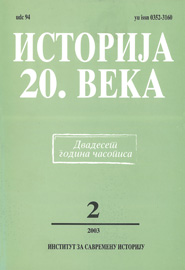
Организовањем научних скупова новембра 2000. и децембра 2001. године, те објављивањем зборника радова са ових скупова' Филозофски факултет у Бањој Луци започео је веома значајан пројекат прео бражаја научног живота у Републици Српској и Босни и Херцеговини. Политички односи посљедње деценије 20. вијека свакако нису ишли наруку научним стријемљењима на цијелом простору бивше СФРЈ, a чини се да је територија Босне и Херцеговине нарочита погођена ратним дешавањима и да најтеже санира њихове посљедице. Самим тим треба поздравити одлуку руководства бањалучког Филозофског факултета да сваке године организује научне скупове о темама које би биле довољно свеобухватне да у њих буду укључене све друштвене науке без обзира на своју различитост.
More...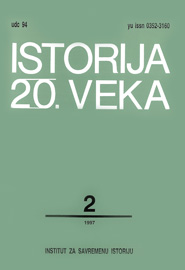
Reviews of: 1. Dr Nikola Žutić, RIMOKATOLIČKA CRKVA I HRVATSTVO, OD ILIRSKE IDEJE DO VELIKOHRVATSKE REALIZACIJE 1453-1941, Institut za savremenu istoriju, Beograd 1977, str. 335. Review by: Ljubodrag Dimić 2. THE SERBS AND THEIR LEADERS IN THE TWENTIETH CENTURY (SRBI I NJIHOVE VOĐE U DVADESETOM VEKU), edited by Peter Radan and Aleksandar Pavković, Ashgate, Aldershot-Brookfield USA-Singapore-Sydney 1997, str. 260. Review by: Bojan B. Dimitrijević 3. NEPOZNATA STRANA KNJIGA О SRBIMA Meri E. Daram, KROZ SRPSKE ZEMLJE (1900-1903), Srpska Evropa, Beograd 1997, str. 338. Review by: Vujadin Milanović 4. Mr Nebojša Popović, JEVREJI U SRBIJI 1918-1941, Institut za savremenu istoriju, Beograd 1997, str. 231. Review by: Ivan S. Hofman 5. Dr Smiljana Đurović, S TESLOM U NOVI VEK, NOVA SINTEZA ISTORIJE, Izabrani članci iz ekonomske istorije Srbije i Jugoslavije 1918-1941, Zavod za udžbenike i nastavna sredstva, Biblioteka grada Beograda, Istorijski arhiv Beograda, Beograd 1997, str. 307. Review by: Miroljub Vasić 6. Dr Momčilo Pavlović, Mira Ninošević, Veroljub Trajković, IZBORNE BORBE U LESKOVAČKOM KRAJU 1919 - 1939. Knjiga prva (1919-1929), Narodni muzej, Leskovac 1997, str. 344. Review by: Ranka Gašić 7. Božin Jovanović, PRIVREDA TIMOČKE KRAJINE 1940-1990, Javno preduzeće štampa, radio i film, Bor, 1995, str. 400. Review by: Slavoljub Cvetković 8. POLITICAL AND IDEOLOGICAL CONFRONTATIONS IN TWENTIETH - CENTURY EUROPE: Essays in Honor of Milorad Drašković, priredili - Robert Conquest i Dušan J. Đorđević 1996 New York. str. 290. Review by: Predrag J. Marković 9. Dr Đuro Kovačević, IZGUBLJENA ISTORIJA, Ogledi i razmišljanja о jugoslovenskoj krizi 1988-1995, Akademija nova i Institut za evropske studije, Beograd 1996, str. 299. Review by: Miroljub Vasić
More...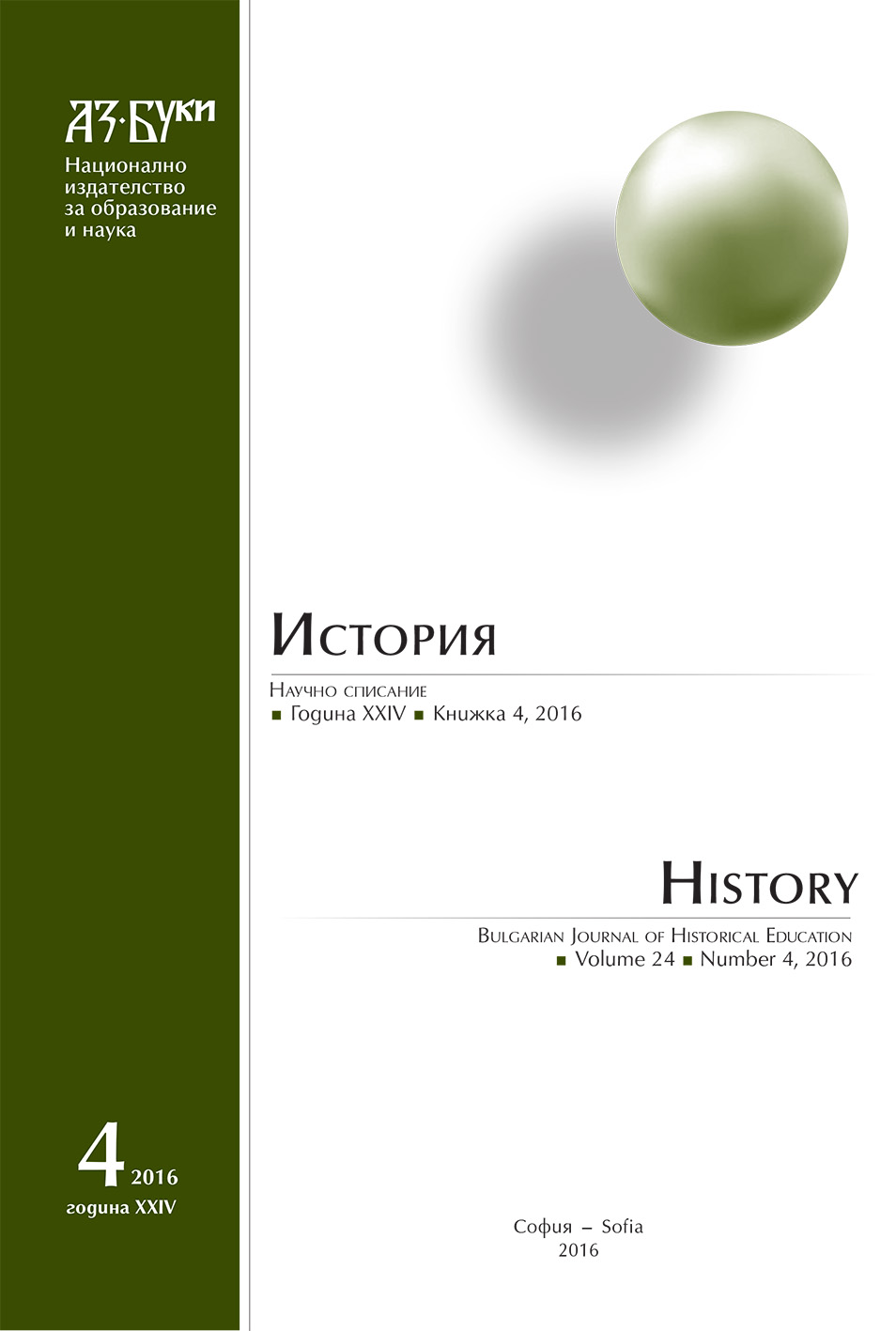
The investigation in question is recorded in a series of thirty-eight register entries on a case of financial malfeasance in recently-conquered Ottoman Egypt that was investigated by officials from Ottoman Syria. This case appears in the oldest existing mühimme defteri, a register of important affairs of the Ottoman Empire, and provides detailed information about how the Ottomans governed their provinces. It lists many of the taxes and revenues collected by the Ottomans and discusses the most important treasury personnel in the province and the documents they created. It also describes how the Ottoman state worked to control those personnel even at a distance and to induce these officials to adhere to concepts of just imperial rule. The article describes the issues in the case and identifies the provincial officials involved in the investigation, the documents they were supposed to collect or create, and the procedures they were commanded to follow. The conclusion examines the implications of the case for our understanding of the place of Syria and Egypt within the wider Ottoman Empire in the sixteenth century. This episode presents an instance of the Ottoman integration of newly conquered lands in a period when records are fairly plentiful (in contrast to the conquest of Rumeli, where most of our evidence comes from chronicles written at a later date). Beyond that, this case illuminates the whole issue of how an empire operates and challenges the stereotype of general Ottoman oppression of the conquered territories.
More...
The text contains elements from the history of the town of Pirdop and its` surroundings during the 19-th century. The codex of the local church community has been studied in detail. The accounting within was noted for two decades by the hand of the local notable, Simon. It starts from the decoration of the new church and further on contains data on the functioning of the church community as a microcredit institution. The core of local notable families was examined, as they were the leaders of the church community. More recent pre-Liberation ethnographic documentation, gathered by the teacher Simeon Aldov (Serdanov) was examined from a general anthropological, „patrimonial“, socioeconomical, ecological and geographical point of view in the frame of the region. Robbery and crime, local political unrest and their consequences have been mentioned in a cholistic perspective, in the spirit of local and regional studies.
More...
The article aims to compare the titles of some dignitaries in the Bulgarian kingdom and the corresponding titles of the dignitaries in Wallachia and Moldova. The cited sources are mostly Wallachian and Moldovan documents from XIV–XV century, when the Byzantine-Bulgarian influence on the state regulations of the Danubian principalities is strongest.
More...
In 1809 the British public was scandalized by the affair of the Duke of York with Marry Anne Clarke. Rumors of the affair spread so widely that the story was articulated very widely in Britain for more than three months. The reputation of the Hanoverian prince was badly damaged by the testimony given forward by Mrs. Clarke. While the second son of King George III was Commander in Chief of the British Army at that time, the story was not only a public scandal, but rather a political crisis for the whole nation. News about corruption, debauchery and intrigues flooded the press, and this whole matter put the integrity of the national leaders to the challenge. Nevertheless, the outcome of the affair underwent a dramatic and unexpected turn.
More...